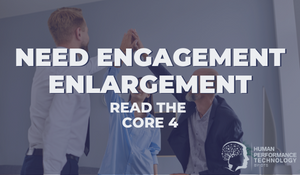Introducing Human-Centred Funding
The process of developing a business case and seeking internal organisational funding might need a shake-up to get a more holistic return on investment. This article looks at the current state of internal funding via business cases and a potential solution to put people at the heart of the investment.
Current State
A business case is typically object-centric, in that the case is prepared to indicate the worthwhile nature and potential return on investment for implementing a new product, platform, system or service.
Object-centred funding is arguably the more common approach for funding business projects. The lead up to object-centred funding would look something like this:
The company's sales platform is 15 years old. The new functionality in the system has been tacked on, and there are frequent manual workarounds to make it all work with each sale. Meanwhile, competitors have a smoother, faster sales process and are taking more of the market share than ever before. The problem is that the system is old, and it needs to be replaced. A review of sales platforms commences, and the best one for the business is selected. A business case is written and approved for a team to implement the new system and get the return on investment via more sales.
If you’re not familiar with the business case document, it includes sections such as:
- Executive summary
- Situation assessment and problem statement
- Solution description
- Project description
- Implementation timeline
- Investment estimate and assumptions
- Cost and benefit analysis
- Risk assessment
- Conclusions and recommendations
A question to ask yourself is: Is this approach effective?
Our position is that this approach has been effective to a recent point in time. But a lot has changed in the last two years. One of the significant changes is the shift in power to employees, who are less interested in working for a business that doesn’t demonstrate care and commitment to people and culture. As we transition to the future of work, businesses are expected to place a greater level of focus and interest on people.
Is there a way for internal funding to take on a more human-centred approach?
Potential Future State
Human-centred funding would solve the “people problem” by selecting a solution that would lead to the best return for employees and customers, and subsequently, the organisation. The lead up to human-centred funding would look something like this:
The company's sales platform is 15 years old. The new functionality in the system has been tacked on, and there are frequent manual workarounds to make it all work with each sale. Meanwhile, competitors have a smoother, faster sales process and are taking more of the market share than ever before. The problem is that the system is old, and it needs to be replaced. The “people problem” is that the natural sales conversation is not aligned with the system. To match customers’ needs to the company’s solutions means that each sales person needs to take care to apply their knowledge of the company’s offering to provide the right match for the customer. In fact, they love these conversations. It also becomes clear that customers’ needs are evolving, and the company’s offering needs to be developed further to match those changing needs.
A review of the sales conversation commences. A review of customers’ needs commences. With people at the heart of the design, it is determined that an investment in understanding and optimising the sales conversation is critical. Furthermore, investment is being proposed for product leaders to spend more time with customers and run a qualitative analysis on their needs and desires.
A business case is written and approved to respond to these concerns and get the return on investment via more satisfied employees, customers and ultimately an increase in sales.
If this concept is of interest, what might you be able to try in your business right away to create a more balanced scorecard in your business case? Consider these ideas:
- Working with human-centred designers.
- Reframing current problem statements to be more people-centric.
- Involving employees and customers, who have a direct stake in the problem being solved.
- Updating business case templates to reflect human-centred principles.

Temre Green, PhD
Head of Consulting Services, Australia & New Zealand. Temre has designed, planned and delivered business strategy and transformation programs that were driven by a range of factors, such as innovation, growth, compliance, regulations, restructures and economic downturns. As an Industrial-Organisational Psychologist, Temre has spent her career dedicated to organisational behaviour and the work environment. She is currently focused on the future of work and multiple areas of organisational development that support organisational growth and health.


/3%20Things%20Managers%20Should%20Know%20About%20Leadership.png?width=374&name=3%20Things%20Managers%20Should%20Know%20About%20Leadership.png)
We Would Like to Hear From You (0 Comments)